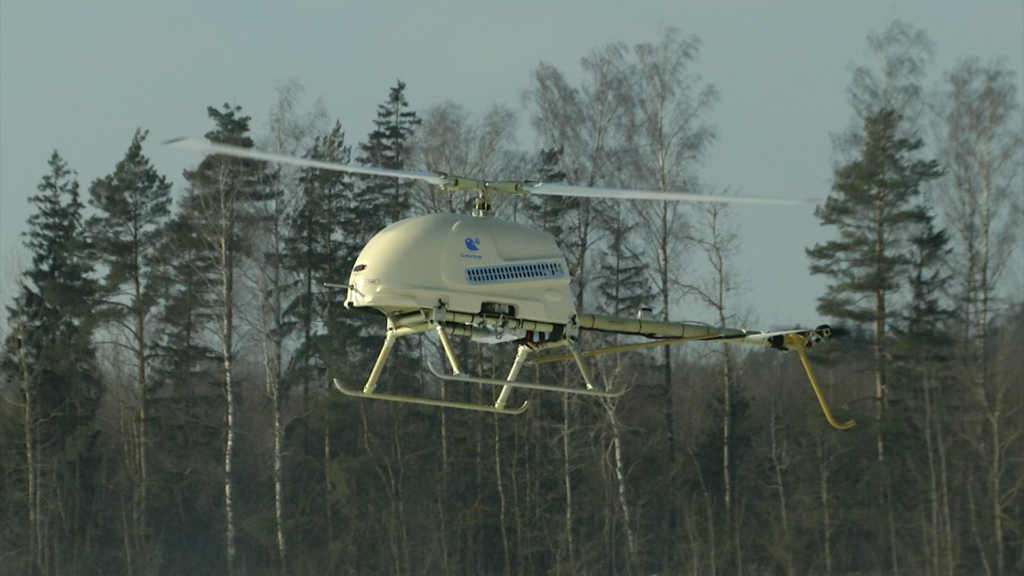 When most people think of drones – even commercial ones – they picture a quadcopter, or maybe a long endurance fixed wing. But at the larger end of the market, there are new developments in a totally different model of unmanned aircraft: an industrial sized, gasoline powered vertical take-off and landing (VTOL) craft.
When most people think of drones – even commercial ones – they picture a quadcopter, or maybe a long endurance fixed wing. But at the larger end of the market, there are new developments in a totally different model of unmanned aircraft: an industrial sized, gasoline powered vertical take-off and landing (VTOL) craft.
California-based UAVOS demonstrated their SURVEYOR-H at UMEX this week in Abu Dhabi, which they call the “tractor modification” of a VTOL drone.
Like a tractor – or a tank – the goal of the vehicle isn’t designed for long flight endurance or sleek speed. At a takeoff weight of 192 lbs (87 kg), the company says that the design is geared towards durability, extended operation life, ease of use, and serviceability. Gasoline-powered, it has a flight range of about 250 miles, with a practical ceiling of 6800 ft. It flies for about 5 hours with a relatively small payload of 11 pounds (5 kg.) It can handle a wide variety of climate conditions: functioning at temperatures from -31F to 122F.
It’s big. It’s reliable. It’s safe and relatively easy to handle. But what’s a huge industrial drone with a relatively light payload capacity used for?
Quite a number of things, evidently. “For the new helicopter, a target payload with a 4K day camera, thermal camera and laser rangefinder is designed,” says the company. “Weight of the gyro-stabilized suspension is 8l bs (3.6 kg). Its gimbal includes a computer for processing video on board, capturing and tracking targets, recording data and automatic guidance.” On the military or security side, the design of the aircraft means that it can carry out research even in conditions of jammed satellite radio signals. For researchers, the aircraft can gather multiple types of data in extreme conditions. Or, it can deliver small cargo to hard to reach areas. But whatever it’s used for, this “unmanned tractor” is no “prosumer” model or toy.
Vadim Tarasov, UAVOS investor and board member says: “The technical architecture of the new VTOL was designed by taking into account the experience of commercial use of helicopters with different target payloads. The new UAV embodies a whole range of design features that enhance the strength and operational survivability of the machine. So, the construction of the unmanned vehicle was strengthened. The helicopter has a completely aluminum framework without the presence of hobby components.”

Miriam McNabb is the Editor-in-Chief of DRONELIFE and CEO of JobForDrones, a professional drone services marketplace, and a fascinated observer of the emerging drone industry and the regulatory environment for drones. Miriam has penned over 3,000 articles focused on the commercial drone space and is an international speaker and recognized figure in the industry. Miriam has a degree from the University of Chicago and over 20 years of experience in high tech sales and marketing for new technologies.
For drone industry consulting or writing, Email Miriam.
TWITTER:@spaldingbarker
Subscribe to DroneLife here.







[…] Source: dronelife.com […]